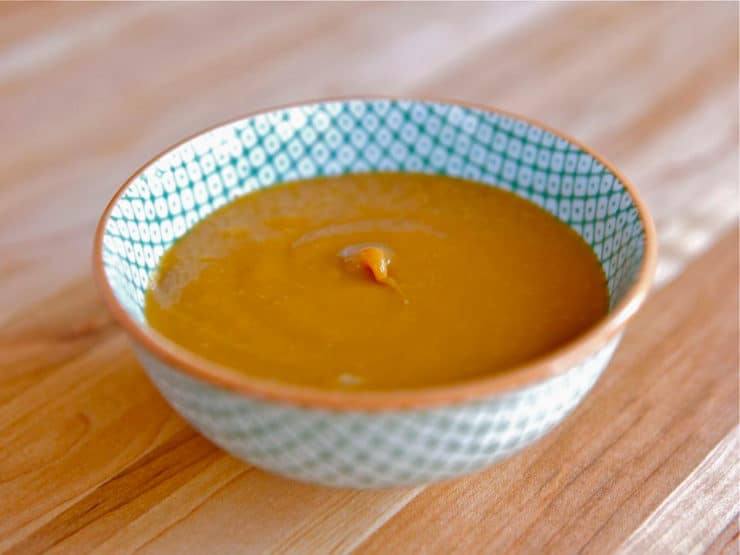
Dulce de leche. The words sound so rich, so dreamy. Just reading them makes my mouth water. This delicious, creamy sauce is made by slowly heating and caramelizing sweetened milk and sugar. Traditionally the process is very slow and includes a lot of stirring, requiring you to stand at the saucepan while the mixture caramelizes. Some people make it by boiling a can of sweetened condensed milk in a pot of water. I’ve always hesitated to do this, however, knowing the potential dangers of an exploding can. Recently my friend Jen shared an easier method with me for creating dulce de leche using sweetened condensed milk. Her process couldn’t be simpler, and it produces a wonderfully thick and creamy sauce. I just had to share it with you!
Use dulce de leche as a topping for ice cream, on pancakes or crepes, to flavor cakes and pies, or as an alternative to bottled caramel sauce. It’s the key ingredient in one of my upcoming Purim recipes (posting soon!). Or, just eat it with a spoon. It’s that good.
Recommended Products:
We are a participant in the Amazon Services LLC Associates Program, an affiliate advertising program designed to provide a means for us to earn fees by linking to Amazon.com and affiliated sites. As an Amazon Associate I earn from qualifying purchases.
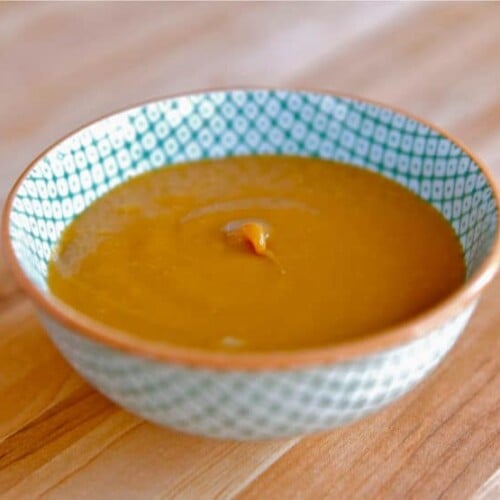
Dulce de Leche
Ingredients
- 14 ounces sweetened condensed milk (not evaporated milk) (1 can)
- 1/8 teaspoon salt (or more to taste)
NOTES
Instructions
- Preheat oven to 425 degrees F. Pour can of sweetened condensed milk into a ceramic pie plate or dish. Sprinkle the milk lightly with about 1/8 tsp of salt (for a more salted caramel flavor, use 1/4 tsp salt).

- Cover tightly with foil. Place the filled pie plate into a large roasting pan and fill the roasting pan with water till it reaches about halfway up the sides of the pie plate.Place the roasting pan into the oven. Let the mixture cook slowly for 75-90 minutes, check the water level every half hour to make sure it hasn't dried out too much. Add water as needed.

- At 75 minutes, begin checking the color of the dulce de leche. When it reaches a rich light brown caramel color, you'll know it's ready. The longer you let it cook, the thicker and darker it will become.Take the pie plate and roasting pan out of the oven. Carefully remove the pie plate from the hot roasting pan. Take off the foil.

- Whisk the dulce de leche mixture. Use warm, or allow to cool to room temperature depending on your intended use.

- Store in the refrigerator. The sauce will keep for up to 4 weeks when refrigerated.

Nutrition

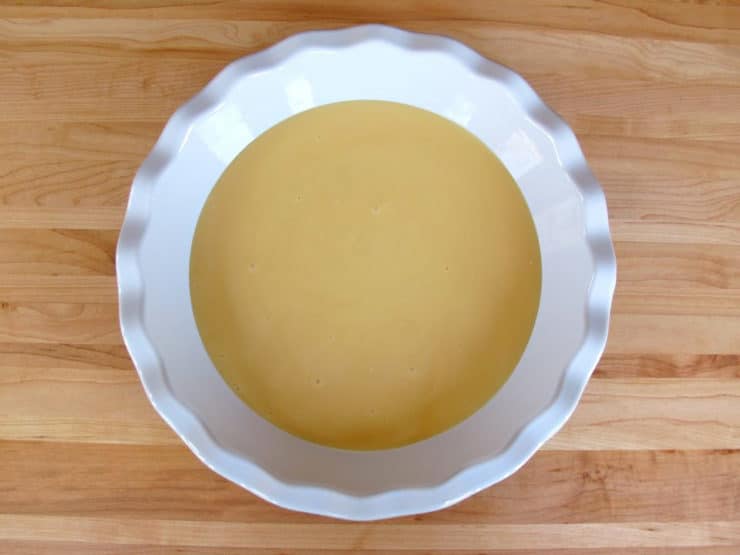
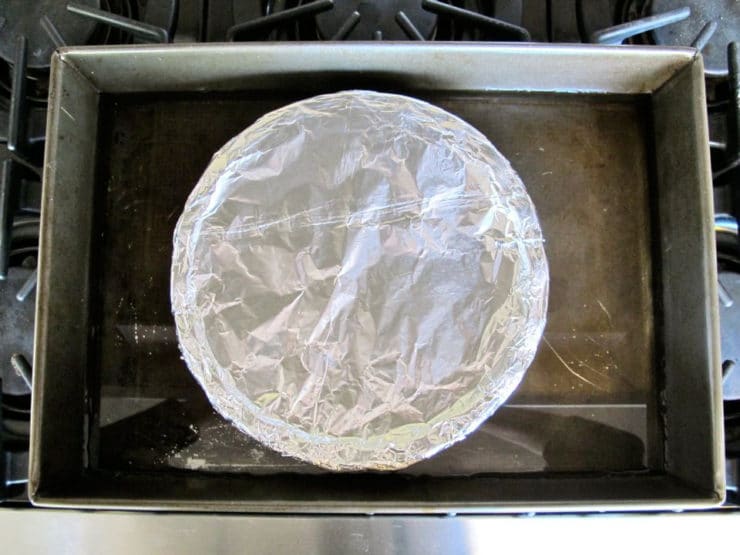
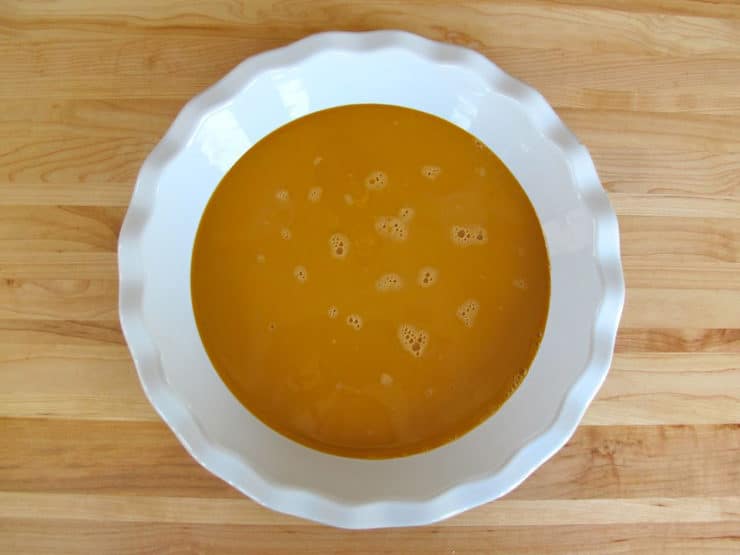
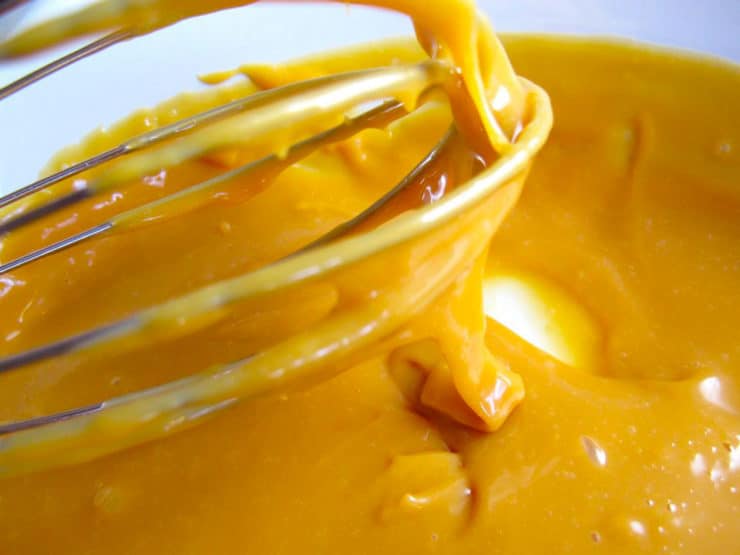


Making this along with the Caramel Apple hamantaschen filling is one of the things I look forward to most at Purim. I’ve made your recipe perfectly three or four times in the past, but I had a problem making the dulce de leche today. The sweetened condensed milk totally separated and left a nice caramel-looking substance on the bottom and a thin, white milky liquid on top. So weird! I’m going to try and salvage the bottom portion and see what it tastes like. If not, I guess I will try again tomorrow!
That’s very strange Suzanne! It’s never happened to me before. Not sure what to tell you! Hope the next batch turns out well.
Is it vital the 1/8 tsp. salt is added to milk to make the Dulce de Leche if a “salted” caramel flavor is not wanted at all? I had a very bad experience with a salted caramel item a while back and now I don’t care for the flavor at all. Is this salt necessary to make this into the Leche? I’ve never made any before at home.
thanks
Not necessary if you don’t enjoy the salt note in the flavor.
Can I substitute the sweet condensed milk with classic coconut milk? (To make it pareve)
Hi, Tori’s assistant Ashley here! It is possible to make dairy free dulce de leche with coconut milk, though we have not currently developed a recipe. I would not suggest substituting the condensed milk with coconut milk in this recipe since I am unsure of the amount of sugar you would need to add.
the tradition in mexico started as a way to conserve any overabundance of goat milk produced by the tejidos communally or by family. that which was not turned into cheese went into thick pots to which was added piloncillo, (un-refined dark cane sugar). in the papantla region where the most and the best vanilla is grown, the people would add vanilla. lots of it. the mixture was slowly reduced over low fires until very thick. until recent decades, cajeta, the major brand of commercial dulce de leche did not discriminate on its’ jars whether it was dulce de leche de cabra, (goat) or dulce de leche de vaca, (cow) becuz it was all goat milk. the cajeta trade mark may still be an alpine goat head face shot. since there is not much canning going on among the tejidos and not a lot of available refrigeration, the indigenous folk there have countless jokes about gringos boiling cans to make dulces.
Hi Tory. Loved the ease of this method but my results were only so so. Probably due to fluctuations in my oven. The milk did not deepen in color or flavor, but did curdle. Finished it off on the stove top adding water to keep it going. Can’t wait to start the caramel apple filling.
Thanks for your blog. It’s my first stop when looking for a recipe or cookin advice!
Deidre, sorry this recipe didn’t work out for you as well as it does for me. The curdling issue is interesting, I’ve never had that problem. I will try to troubleshoot this and get back to you, as I’d love to know what went wrong! Glad you were able to find a fix. 🙂